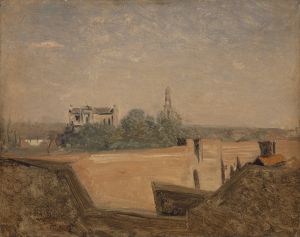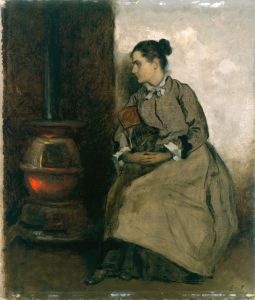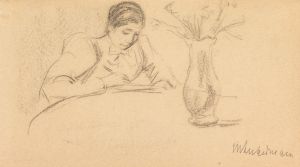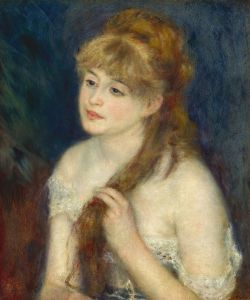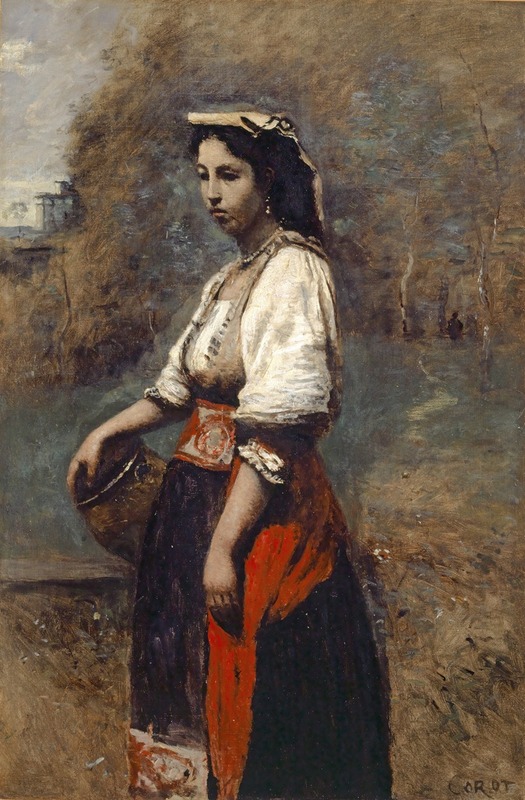
Italian Woman at the Well
A hand-painted replica of Jean-Baptiste-Camille Corot’s masterpiece Italian Woman at the Well, meticulously crafted by professional artists to capture the true essence of the original. Each piece is created with museum-quality canvas and rare mineral pigments, carefully painted by experienced artists with delicate brushstrokes and rich, layered colors to perfectly recreate the texture of the original artwork. Unlike machine-printed reproductions, this hand-painted version brings the painting to life, infused with the artist’s emotions and skill in every stroke. Whether for personal collection or home decoration, it instantly elevates the artistic atmosphere of any space.
Jean-Baptiste-Camille Corot's painting "Italian Woman at the Well" is a notable work by the French landscape and portrait artist, who is often associated with the Barbizon School and is considered a pivotal figure in landscape painting. Corot's work laid the groundwork for the Impressionist movement, and his ability to capture the essence of a scene with a delicate balance of light and shadow is evident in this painting.
"Italian Woman at the Well" is an example of Corot's interest in combining landscape with figure painting, a theme he explored throughout his career. The painting features a young Italian woman standing by a well, a common motif in Corot's work, which often depicted rural and pastoral scenes. The setting is likely inspired by Corot's travels in Italy, where he spent several years studying and painting the countryside, absorbing the light and atmosphere that would become characteristic of his style.
Corot's technique in this painting reflects his mastery of both figure and landscape. The woman is rendered with a gentle realism, her posture relaxed yet poised, suggesting a moment of quiet reflection or pause in her daily routine. The well, a central element in the composition, serves as both a literal and metaphorical source of life and sustenance, grounding the scene in a sense of place and purpose.
The background of the painting is typical of Corot's landscapes, with soft, muted tones and a harmonious blend of colors that create a serene and tranquil atmosphere. His use of light is particularly noteworthy; it bathes the scene in a gentle glow, highlighting the woman's features and the textures of her clothing, while also casting subtle shadows that add depth and dimension to the composition.
Corot's influence on later artists, particularly the Impressionists, can be seen in his approach to capturing the transient effects of light and atmosphere. His ability to convey mood and emotion through landscape and figure was highly regarded by his contemporaries and continues to be appreciated by art historians and enthusiasts today.
"Italian Woman at the Well" exemplifies Corot's skill in integrating human presence within a natural setting, a hallmark of his work that bridges the gap between the classical traditions of landscape painting and the emerging modernist approaches of the late 19th century. The painting is a testament to Corot's enduring legacy as a master of both landscape and portraiture, whose work continues to inspire and captivate audiences.
While specific details about the provenance or current location of "Italian Woman at the Well" may not be widely documented, Corot's body of work is well-represented in major art institutions around the world, including the Louvre in Paris and the Metropolitan Museum of Art in New York. His paintings remain a significant part of the study of 19th-century art, offering insights into the evolution of landscape painting and the early influences on Impressionism.







